|
Accompanying Persons Programme
Tuesday, 24 June 2008
Excursion in Winter Palace-HERMITAGE, MENSHIKOV PALACE, KUNSTKAMMER
- 10:00-14:00 – Excursion in Winter Palace-HERMITAGE, MENSHIKOV PALACE.
The bus arrived from AZIMUT Hotel at 10:00.
- 14:00-15:00 – launch out in dining-hall (Mining Institute, three floor)
- 15:00-18:00 – Excursion in KUNSTKAMERRA.
- 18:00-20:00 – Welcome Diner (Mining Institute, Cadet Corps Hall).
Winter Palace – HERMITAGE
Located between the Palace Embankment and the Palace Square, the Winter Palace (Hermitage) in Saint Petersburg was built between 1754 and 1762 as the winter residence of the Russian tsars. Designed by Bartolomeo Rastrelli, the Rococo-style, green-and-white palace has 1,786 doors and 1,945 windows. Catherine the Great was its first imperial occupant. The Palace is now part of a complex of buildings known as the State Hermitage Museum, which holds one of the world's greatest collections of art. As part of the Museum, many of the Winter Palace's 1,057 halls and rooms are open to the public. The Military Gallery, opened in 1826, accommodates 332 portraits of military leaders of the Russian army during Napoleon's invasion of Russia.. After the February Revolution in Russia, the Winter Palace was the headquarters of the Russian Provisional Govement.. The assault of the Winter Palace by Bolshevik forces was the official milestone of the October Revolution.
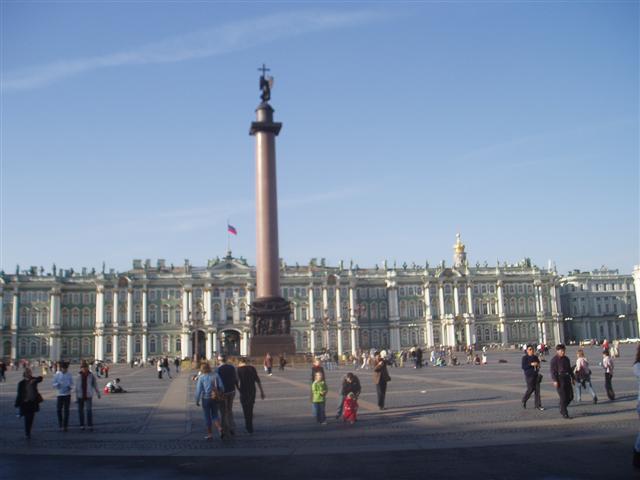 View of the Winter Palace from the Palace Square MENSHIKOV PALACE
The palace of Prince Alexander Danilovich Menshikov is a veritable museum of Russian art from the first quarter of the 13th century. It was built for the Prince from 1710 to 1712 and from 1713 to 1727 (architects: Giovanni Mario Fontana and Gottfried Johann Schadel, assisted by Domenico Trezzini, Bartolomeo Francesco Rastrelli, Georg Johann Mattarnovy and Jean-Baptiste Le Blond). One of the largest and most splendid buildings of its time, the palace was surrounded by a regular garden with sculptures, fountains, grottoes and greenhouses. Moreover, a pier was built on the Neva side. The official residence belonging to Menshikov, governor general of the capital and president of the College of War, was used for diplomatic receptions and gala celebrations. Following Menshikov's downfall and exile in 1732, the palace was turned over to a military school called the "Land Nobility Corps" (later the First Cadet Corps) and, as a result, underwent certain modifications.
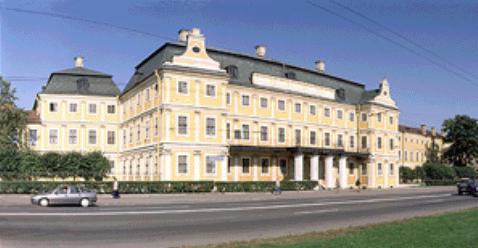 View of the Menshikov Palace from the University Embankment KUNSTKAMMER
Located on the banks of the Neva in the center of St.Petersburg, the Kunstkammer has been the symbol of the Russian Academy of Sciences since the early 13th century. Founded to Peter the Great's Decree, the Museum opened to the public in 1714. Its purpose was to collect and examine natural and human curiosities and rarities. Today, collections of Peter the Great's Museum of Anthropology and Ethnography (Kunstkammer) are among the most complete and interesting in the world. These collections contain over one million artifacts and reflect the diversity of traditional cultures in the Old and New World. The Museum has always been one of the world's largest centers where human cultural heritage is studied, continuing the traditions of the great Russian cultural and physical anthropologists of the 18 - 20th centuries. We are pleased to welcome you to the pages of our museum where we hope you will find interesting and useful information about the peoples and cultures of the world.
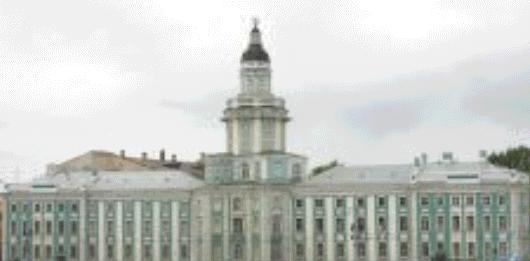 Museum of Anthropology and Ethnography (Kunstkammer) – view from the University Embankment Wednesday, 25 June 2008
Excursion in ST. ISAAC'S CATHEDRAL, KAZANSKYI CATHEDRAL, SPAS-NA-KROVI(Saviour-on-the-Blood), Sightseeing excursion of Saint Petersburg
- 10:00-14:00 – Excursion in ST. ISAAC'S CATHEDRAL, KAZANSKYI CATHEDRAL, SPAS-NA-KROVI.
The bus arrived from AZIMUT Hotel at 10:00.
- 14:00-15:00 – launch out in dining-hall (Mining Institute, three floor).
- 19:00-22:00 – Sightseeing excursion of Saint Petersburg.
ST. ISAAC'S CATHEDRAL
St. Isaac's Cathedral is a remarkable monument of Russian architecture. This grand structure filled up the space of the Senate Square, and created a new square as well. Alongside with the Peter and Paul's Cathedral and the Admiralty it became an important architectural landmark in the city outline. The golden dome of St. Isaac's can be seen from any part of the city, and in clear weather - even from the suburbs.
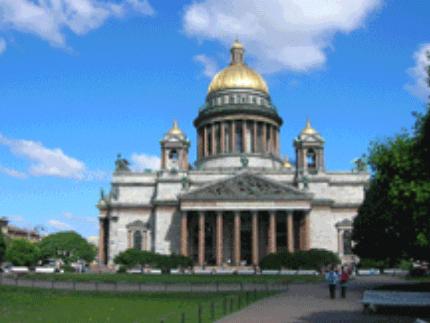 St. Isaac's Cathedral KAZANSKYI CATHEDRAL
Kazanskyi cathedral is one of the main city cathedrals. The cornerstone of the cathedral was laid on the 27-th of August, 1801 on the place of the little church of the Birth of Our Lady, where the miracle-working icon of Our Lady of Kazan was treasured. The cathedral had been constructed only by 1811. After the victory over Napoleon Kazanskyi Cathedral became the memorial of the Patriotic war of 1812. The banners of the French regiments, the keys of the cities and fortresses occupied by Russian regiments and other trophies were brought here. In 1813 commander Kutuzov was buried on the territory of the cathedral. After the revolution the Museum of Religion and Atheism was opened in the Cathedral. Since 1990 the holy service began to be served again in Kazanskyi cathedral.
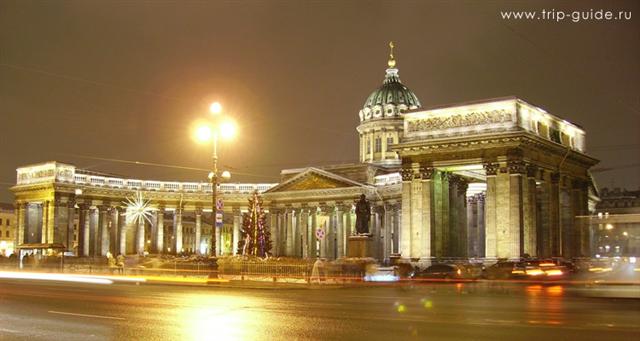 Kazanskyi Cathedral SPAS-NA-KROVI
The "Spas-Na-Krovi" (Savior-on the Spilt Blood} Church (Christ Resurrection Church) was constructed in the years 1833-1907, on the place, where on March, 1 in 1881 Ignatiy Grinenetsky deadly wounded the emperor Alexander II. The church was designed by Alfred Parland, who used various composition methods and exploited the shapes of Moscow and Yaroslavl churches of the 17-th century. The building is one of the masterpieces of Russian mosaic art. The fagade walls are faced with the glazed brick and multicolor ceramic and ornamented glazed tiles. Various kinds of Italian marble and different Russian semiprecious stones were used in the process of floor and interior walls decoration. There are nine domes on the "Spas-Na-Krovi" Church. The covering of these five domes of the church with jeweler's enamel with the total area of 1000 square meters is of great interest.
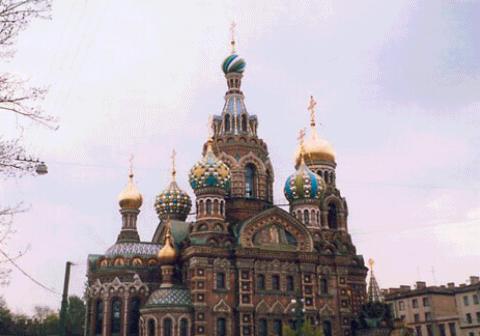 The "Spas-Na-Krovi" (Savior-on the Spilt Blood) Church Sightseeing excursion of Saint Petersburg
Sightseeing tour across St.-Petersburg - it is one of the most interesting and informative excursions. During excursion you will seethe most well-known sights of city, will feel an atmosphere of Petersburg and receive many unforgettable impressions. Usually excursion begins with the main street of St. Petersburg the Nevskyi Avenue - which originates at Admiralty, one of the first constructions in city also comes to an end on Alexander Nevskogo's Square where it is located Alexander-Neva Laurels. During excursion, you will see the main Square of city -Dvortsovaia on which are the Winter Palace well-known for the whole world, a former residence of Russian tsars, and now a world famous museum the Hermitage, and a building of the General staff.
On the Square of Decembrists (was Senatorial) where in December 1825 there was a well-known revolt, you will see one of the most well-known symbols of city, a monument to Peter Greater, known under the name the Copper Horseman. Also, you will get acquainted and with other sights of the central part of city, such as: the Peter and Paul Fortress, Admiralty, Isaak's Cathedral, Big Gostinyi Dvor, Cathedral " Spas-na-Krovi", Michailovskii Palace and Engineering Castle. On an Arrow of Vasilevskii Island you will have an opportunity to think of desire at the well-known Sphynxes, what near to the Academy of arts, you will see a building of Twelve Boards where one of the oldest educational centers of Russia today is located - the St.-Petersburg State University.
Also you will see a majestic building of the Stock Exchange (nowadays the Museum of Navy fleet of Russia) and the well-known Rostral Columns (one more symbol of city - Sea Power) forming itself ensemble of the Arrow of Vasilevskii island.
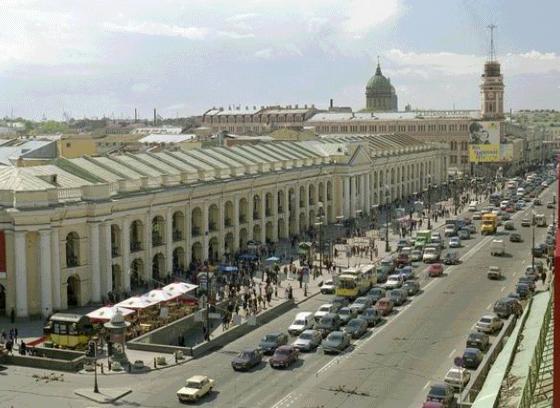 Nevskyi Avenue (the Big Gostinyi Dvor Market) 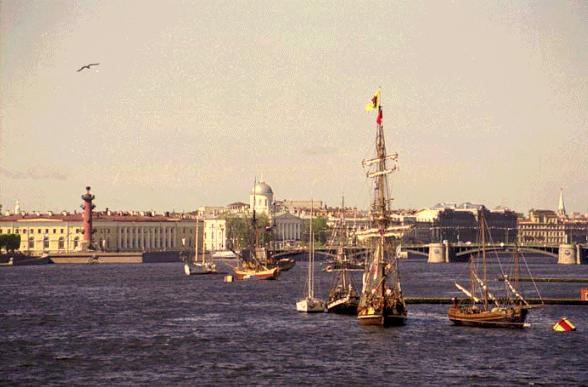 View on Strelka Vasilevskyi Island Thursday, 26 June 2008
Excursion to Tsarskoe Selo, Catherine Palace and Amber Room, Russian Museum
- 10:00-14:00 – Excursion to Tsarskoe Selo, Catherine Palace and Amber Room.
The bus arrived from AZIMUT Hotel at 10:00.
- 14:00-15:00 – launch out in dining-hall (Mining Institute, three floor).
- 15:00-18:00 – Excursion in the Russian Museum.
- 18:00-20:00 – Farewell Diner (Mining Institute, 3r{l floor)
- 20:00 – The bus drives off in AZIMUT Hotel).
The Tsarskoye Selo State Museum is a brilliant monument of world architecture and park and garden artistry of the 18th-20th centuries. In Tsarskoye Selo the full range of artistic styles is represented, from the Baroque (in buildings by Bartolomeo Franchesco Rastrelli) and Classical eras (buildings by Charles Cameron, Giacomo Quarenghi, Vasily Stasov and others). Imperial rulers from Catherine I to Nicolas II have left their mark on Tsarskoye Selo. The compositional centre of the ensemble is the Catherine Palace, a magnificent baroque-style palace.
In Great Hall of the Palace and the Golden Enfilade of formal halls, among which can be found the Amber Room currently under restoration, amaze with the luxury of their decoration. The Alexander Palace is one of the best examples of world architecture executed in the classical style. More than 100 architectural objects with a total area of 300 hectares occupy the territory of the Catherine and Alexander parks: from the most magnificent palaces and monuments, to pavilions and bridges.
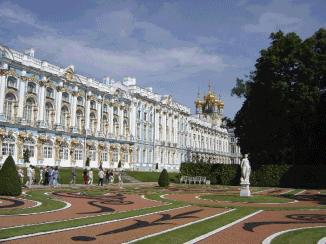 Catherine Palace (Tsarskoe Selo) 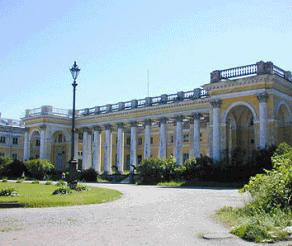 Alexander Palace (Tsarskoe Selo) AMBER ROOM
A unique interior of the Great Catherine Palace, and 13th century arts and crafts monument. The walls of the Amber Room are decorated with the amber panels (the only example of amber used in Russian architecture). In 1716, Prussian King Friedrich Wilhelm I granted an amber study to Peter the Great staying in Habelberg (near Berlin}, but the attempt to establish it straightaway failed. For the first time in St. Petersburg the Amber Room was arranged for the future Empress Elizaveta Petrovna in the Third Winter Palace.
In 1745, Friedrich II who had ascended the Prussian throne presented Empress Elizaveta Petrovna the forth Amber Room, executed at his behest in Konigsberg (in addition to the three presented to Peter the Great). In the same years F. Rastrelli, reconstructing the Grand Catherine Palace at Tsarskoe Selo, included the Amber Room in the premises of the Gala Palace. To make assurance doubly sure, panels and frames treasured in the Summer Palace of Peter the Great in St. Petersburg were moved to Tsarskoe Selo under armed guard.
To set the Amber Room the premises of 96 square metres turned out to be too spacious. Rastrelli offered a three-tier composition of the decor and placed the already existing panels and frames in the middle tier. Above and below it the walls were covered with canvas and painted by I.I. Belsky to look like amber. In 1758, Prussian amber master F. Roggenbuck headed the production of new amber articles in the workshops created on the spot. In the course of four years eight shields of the lower tier and eight panels were made (450 kg of amber was used).
A Florentine mosaic was made in Italy in Petroduru workshops to the sketches of G. Zocchi. During the Great Patriotic War the decor of the Amber Room was taken by German authorities to Konigsberg, in 1944 it was lost. In the 1990s, in Germany two items of the Amber Room resurfaced, those were given over to Tsarskoe Selo Museum. Work on the reconstruction of the Amber Room started in 1936 (under the direction of architect A. A. Kedrinsky). The reconstructed Amber Room was solemnly opened in March of 2003.
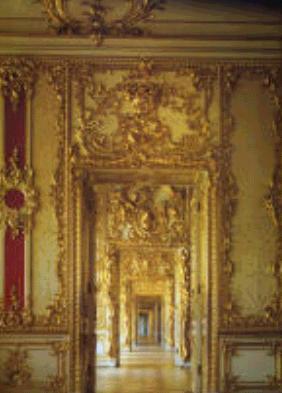 Amber Room (Catherine Palace) Excursion in the Russian Museum
The Russian Museum is the first state museum of the Russian fine art in the country. It was established in 1895 in St Petersburg under the decree of the Emperor Nicholas II. Grand opened for visitors on March 19 (March 7, the Old Style) 1898. The Russian Museum today is a unique depository of artistic treasures, a famous restoration centre, an authoritative institute of academic research, one of the major cultural and educational centers, research and methodological centre of art museums of the Russian Federation, overseeing activities of 260 art museums of Russia.
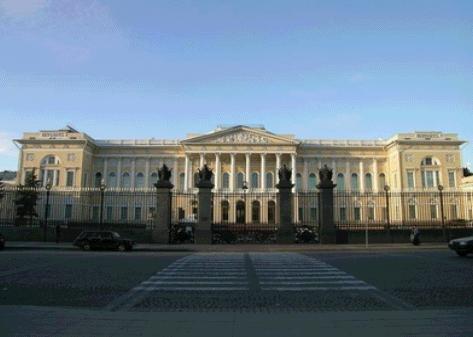 Russian Museum Friday, 27 June 2008
Free time.
- 14:00-15:00 – launch out in dining-hall (Mining Institute, three floor).
Saturday, 28 June 2008
- 9:00-18:00 – Post-Conference Excursion to Peterhof.
|